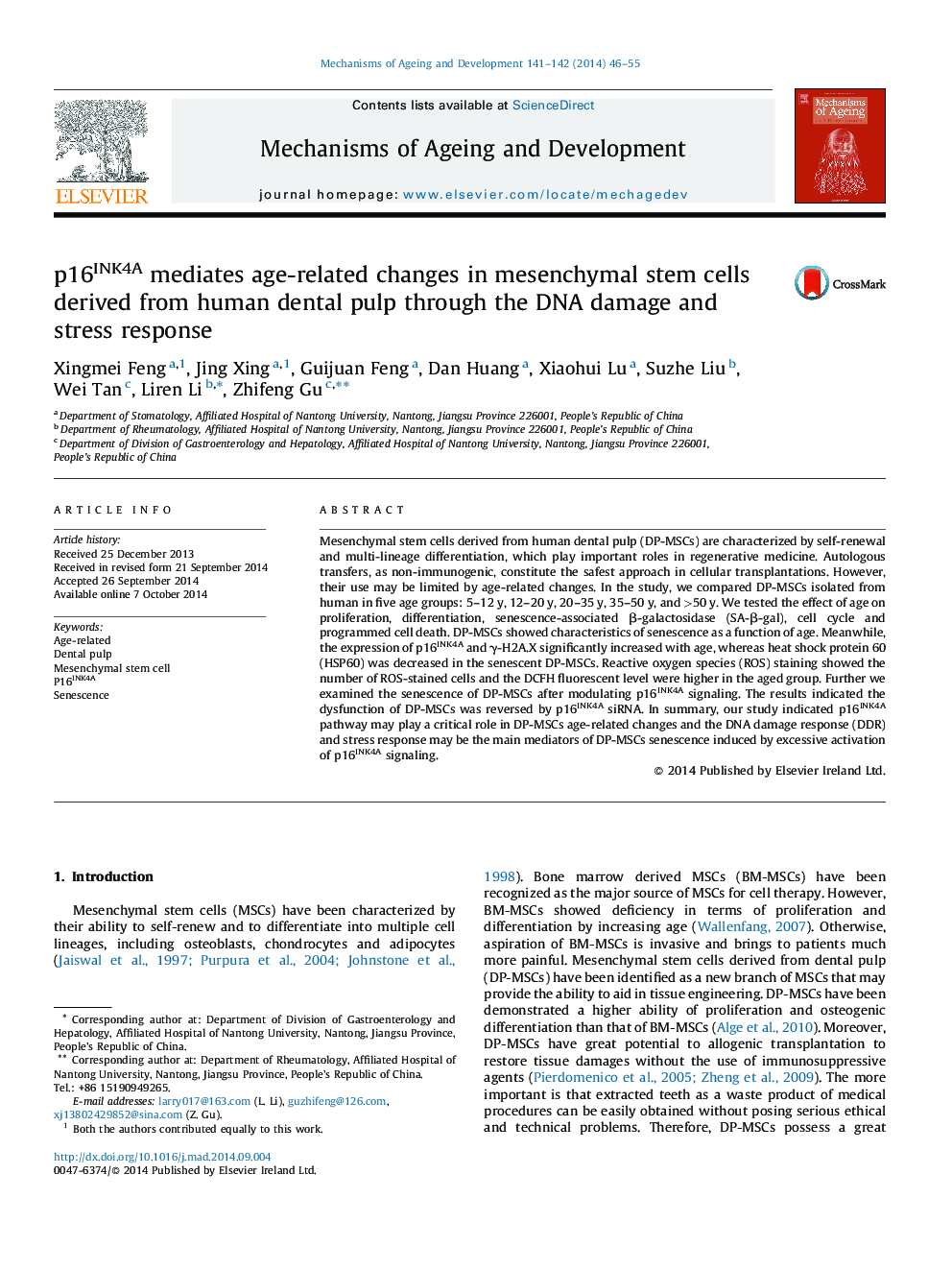| Article ID | Journal | Published Year | Pages | File Type |
|---|---|---|---|---|
| 8284923 | Mechanisms of Ageing and Development | 2014 | 10 Pages |
Abstract
Mesenchymal stem cells derived from human dental pulp (DP-MSCs) are characterized by self-renewal and multi-lineage differentiation, which play important roles in regenerative medicine. Autologous transfers, as non-immunogenic, constitute the safest approach in cellular transplantations. However, their use may be limited by age-related changes. In the study, we compared DP-MSCs isolated from human in five age groups: 5-12 y, 12-20 y, 20-35 y, 35-50 y, and >50 y. We tested the effect of age on proliferation, differentiation, senescence-associated β-galactosidase (SA-β-gal), cell cycle and programmed cell death. DP-MSCs showed characteristics of senescence as a function of age. Meanwhile, the expression of p16INK4A and γ-H2A.X significantly increased with age, whereas heat shock protein 60 (HSP60) was decreased in the senescent DP-MSCs. Reactive oxygen species (ROS) staining showed the number of ROS-stained cells and the DCFH fluorescent level were higher in the aged group. Further we examined the senescence of DP-MSCs after modulating p16INK4A signaling. The results indicated the dysfunction of DP-MSCs was reversed by p16INK4A siRNA. In summary, our study indicated p16INK4A pathway may play a critical role in DP-MSCs age-related changes and the DNA damage response (DDR) and stress response may be the main mediators of DP-MSCs senescence induced by excessive activation of p16INK4A signaling.
Related Topics
Life Sciences
Biochemistry, Genetics and Molecular Biology
Ageing
Authors
Xingmei Feng, Jing Xing, Guijuan Feng, Dan Huang, Xiaohui Lu, Suzhe Liu, Wei Tan, Liren Li, Zhifeng Gu,
